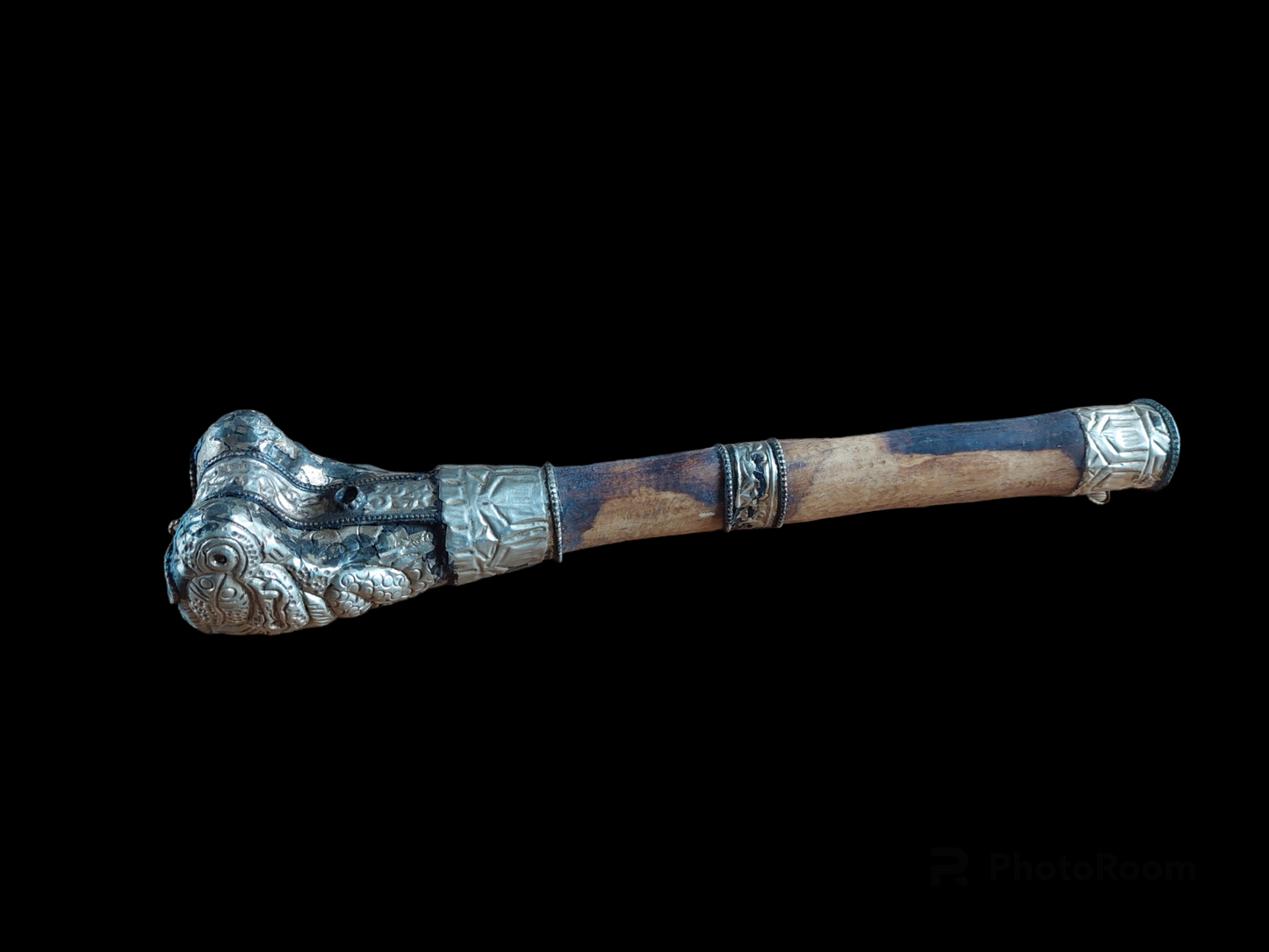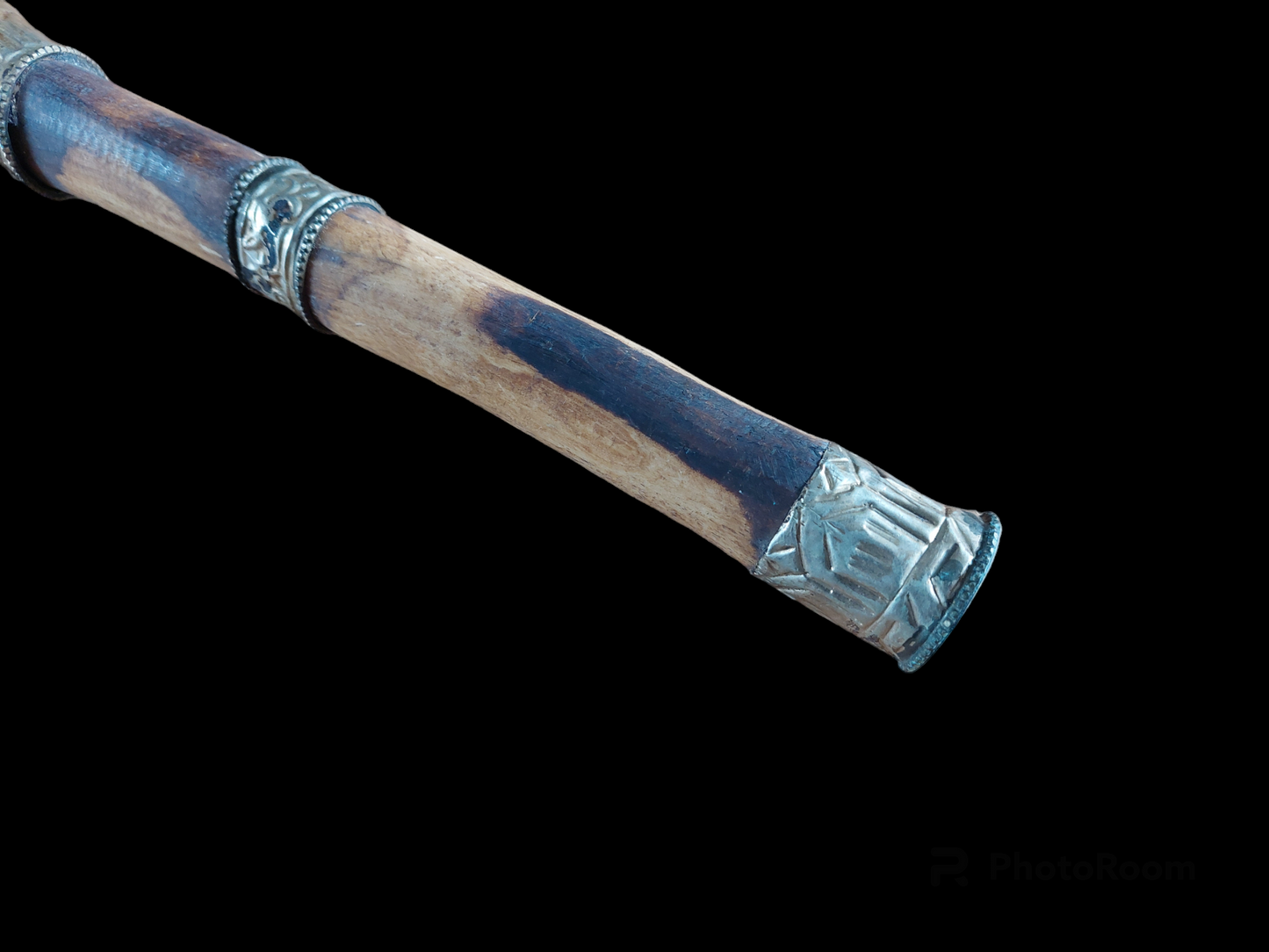Seawolf Shop
Antique Tibetan yak bone kangling #2
Antique Tibetan yak bone kangling #2
Couldn't load pickup availability
Share
The word ‘kangling’ literally translates as ‘legflute’. It is the Tibetan name for a trumpet or horn originally made out of a human tibia or femur.
Kanglings are used in tantric buddhist rituals such as the chod ritual or during funeral ceremonies. In chod rituals the kangling, paired with the damaru-drum and bell, is played as an act of compassion for the hungry spirits; playing the kangling calls them in to the ritual space where the practitioner visualizes to symbolically offer them his own body, so that they can satisfy their hunger and thus relieve their sufferings.
For the practitioner this is a practice in compassion, but also, in the placing of another person’s legbone to your mouth, there’s of course a powerful reminder of one’s own mortality and place in the foodchain. It's a powerful practice in cutting through the bonds with one's own ego and the identification with the physical body.
Nowadays, kanglings are mostly made from different materials such as wood, resin or yak bone. The kangling here in our shop is made from yak bone and is thus a very close resemblance to the ones made from human bone.
The yak bone is adorned with silver colored brass, which probably once has been decorated further with inlay stones from turquoise and coral. Of course, due to its age (this one can roughly be determined somewhere in the beginning of the 20th century), there are damages and imperfections to the metal decoration. But overall, this piece is still in good condition.
Length is approximately 34 centimeters. Weight is approximately 408 grams.



















